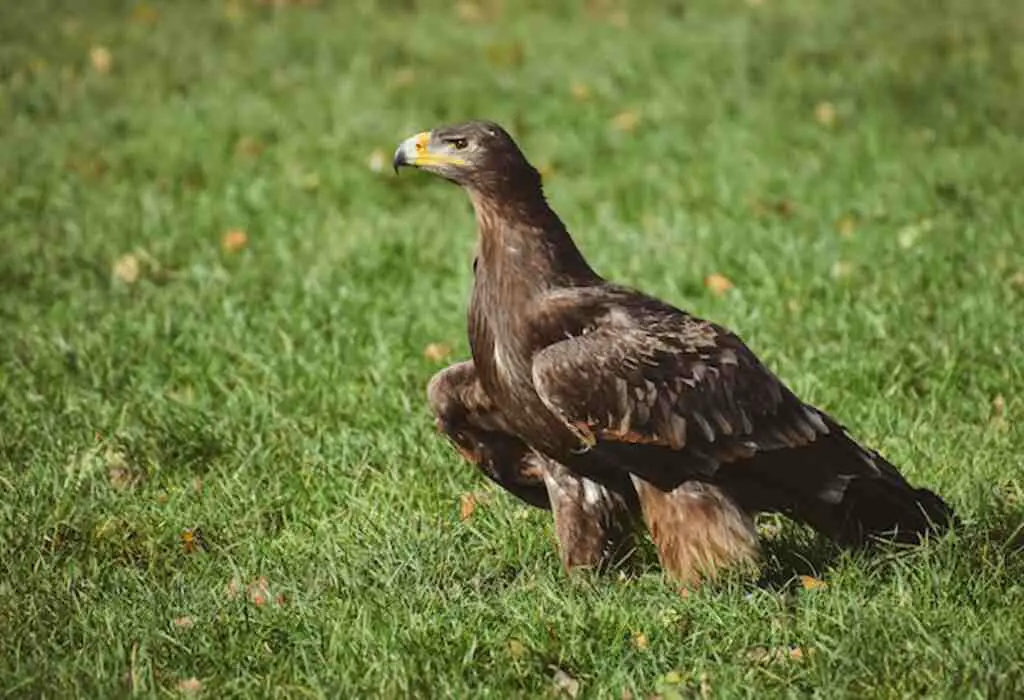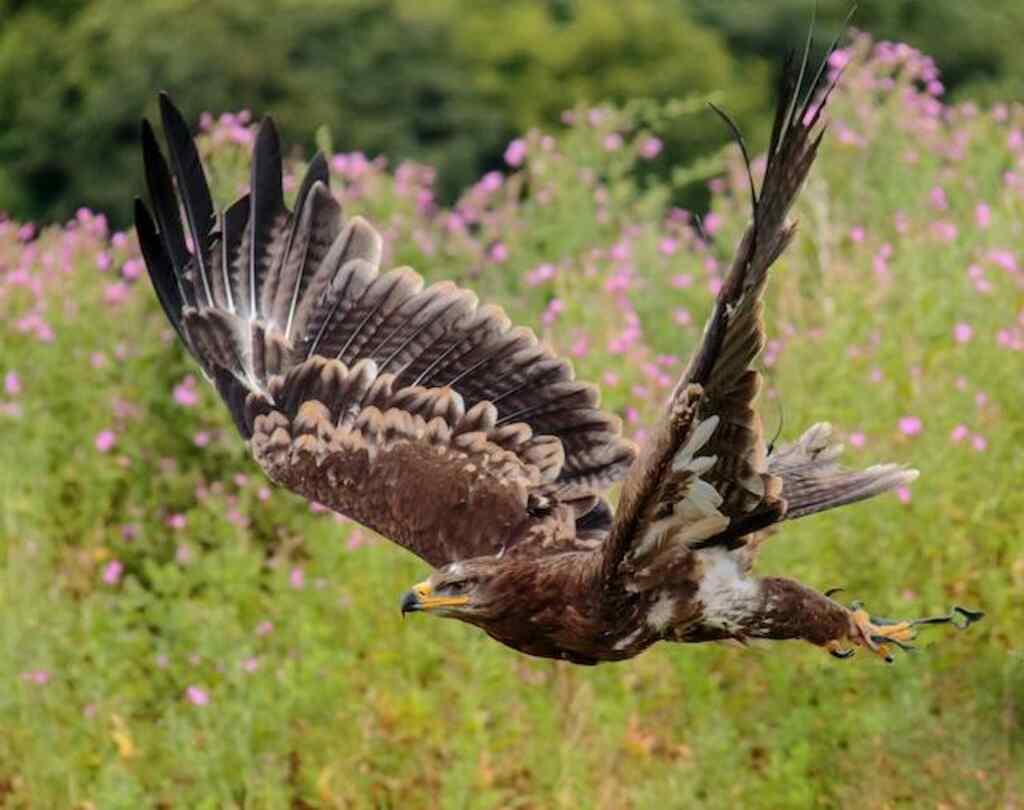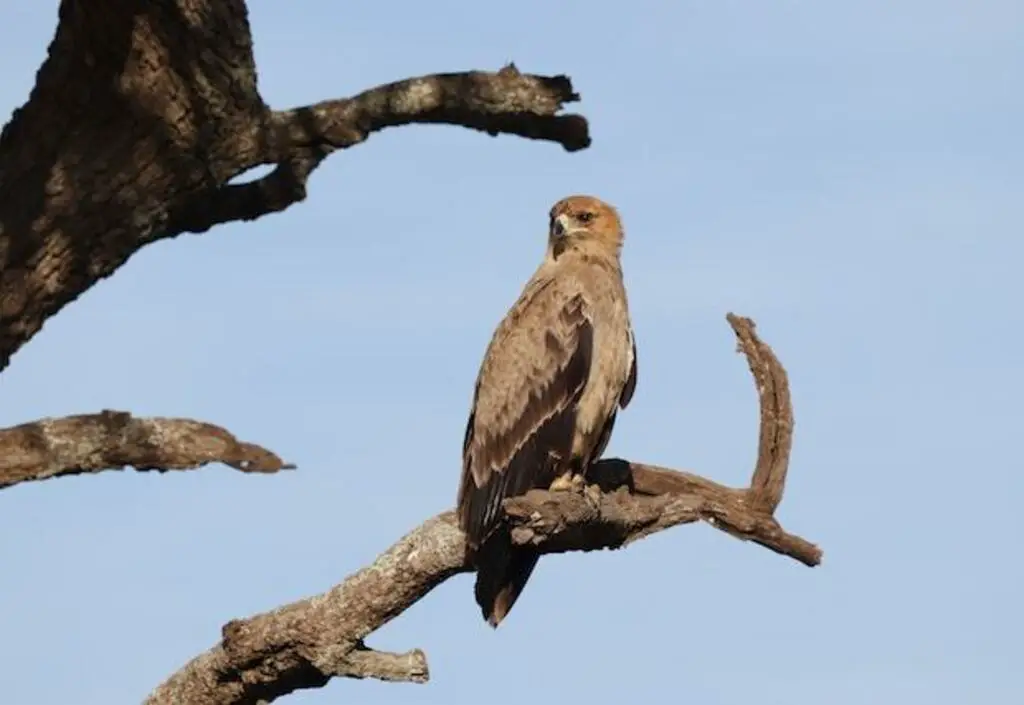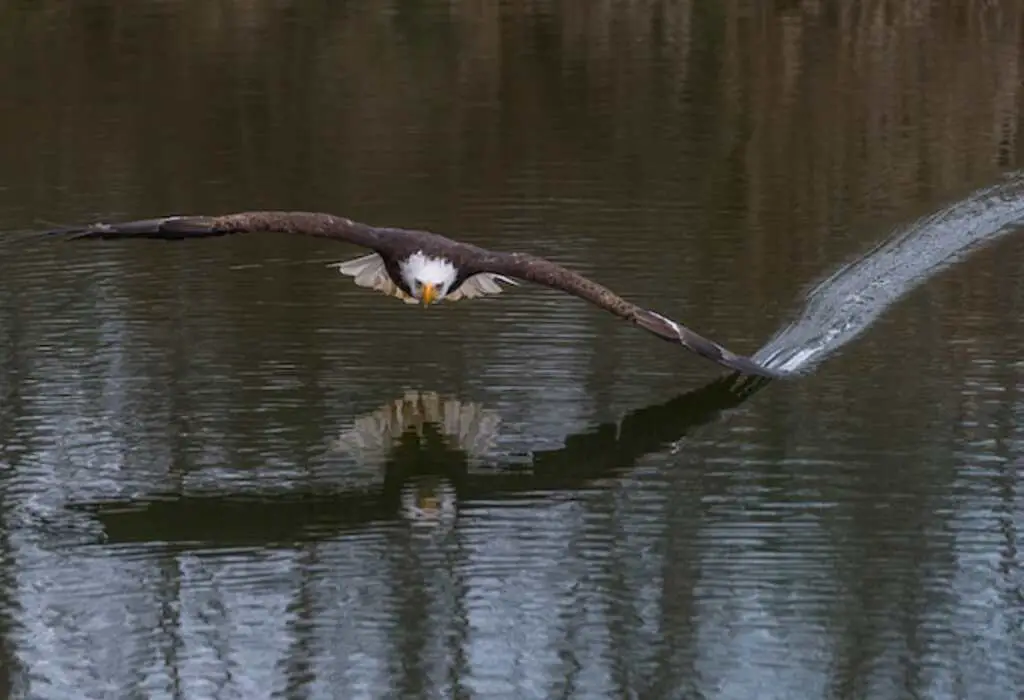Do Eagles Eat Corn? The mystery surrounding the eating habits of these majestic birds is as intriguing as it is amusing.
While we’re used to seeing eagles soaring through the skies with mighty grace, the thought of them munching on a cob of corn might seem comically bizarre.
So, do eagles really have a taste for corn? Join us as we uncover the surprising truth and explore the fascinating dietary preferences of these magnificent creatures.
Table of Contents
- 1 Key Takeaways
- 2 Do Eagles Eat Corn
- 3 Overview of Eagle’s Diet
- 4 Primary Food Sources for Eagles
- 5 Other Foods Eagles May Consume
- 6 Rare Occurrences of Eagles Eating Corn
- 7 Explanation for Corn Consumption
- 8 Nutritional Value of Corn for Eagles
- 9 Feeding Habits and Hunting Techniques
- 10 Environmental Impact of Eagles’ Diet
- 11 Conservation Efforts to Protect Eagles and their Habitat
- 12 Conclusion
- 13 Frequently Asked Questions
- 14 Author
Key Takeaways
- Eagles are primarily carnivorous and do not typically eat corn as a significant part of their diet.
- Understanding eagles’ natural diet and feeding habits is important for conservation efforts.
- Eagles play a crucial role in maintaining ecosystem balance as top predators.
- Protecting eagle habitats and food sources is vital for their survival and ecosystem health.

Do Eagles Eat Corn
Eagles are primarily carnivorous and do not eat corn as a significant part of their diet. While they may show curiosity or scavenge unconventional food items like corn, it is not a staple food source for them. Their natural diet consists of fish, small mammals, and birds.
Overview of Eagle’s Diet
The diet of eagles consists of a wide range of prey items, including small mammals, birds, reptiles, and fish.
Eagles are opportunistic predators that adapt their hunting behavior according to the availability of prey.
The eagle population and hunting behavior are closely linked, as changes in prey abundance can impact the eagle population dynamics.
Understanding the primary food sources for eagles is essential to gain insights into their ecological role and conservation.
Primary Food Sources for Eagles
This section will discuss the primary food sources for eagles, focusing on two key points: fish and small mammals.
Eagles are known for their ability to catch fish, which is a staple of their diet. They are skilled hunters, using their sharp talons and keen eyesight to snatch fish from bodies of water.
In addition to fish, eagles also prey on small mammals such as rabbits, squirrels, and rodents, which provide them with essential nutrients and energy.
Fish
Fish, the elegant dancers of the underwater world, are a significant prey for eagles. Their consumption forms a vital part of the eagle’s diet.
Eagles exhibit exceptional fishing behavior, using their sharp talons and keen eyesight to spot fish swimming near the water’s surface.
With remarkable precision, they swoop down and snatch their prey from the water.
However, fish are not the only food source for eagles. Transitioning to the subsequent section, eagles also rely on small mammals for sustenance.
Small mammals
Small mammals play a crucial role in the diet of eagles, serving as an important source of sustenance alongside fish.
Eagles exhibit predatory behavior towards these small mammals, which include rodents, rabbits, and squirrels. They rely on their sharp talons and powerful beaks to capture and kill their prey.
These small mammals provide eagles with essential nutrients and energy. However, small mammals are not the only food source for eagles. They also consume other foods such as carrion and birds.
Other Foods Eagles May Consume
In their quest for sustenance, eagles may also partake in a diverse array of victuals, including various types of berries and fruits. These additional food sources expand the eagle’s eating habits and have an impact on their overall diet.
However, it is worth noting that rare occurrences of eagles consuming corn have been observed. This fascinating phenomenon will be explored in the subsequent section.

Rare Occurrences of Eagles Eating Corn
Corn consumption by eagles is a seldom observed phenomenon, which warrants further investigation and analysis. This rare occurrence raises questions about the agricultural impact of eagle behavior.
The following unordered list illustrates the peculiarities of eagles consuming corn:
- Eagles are primarily carnivorous birds.
- Corn is not a typical part of their diet.
- Instances of eagles eating corn are infrequent.
- The reasons behind this behavior remain unclear.
- Studying this phenomenon can provide valuable insights into the dietary preferences of eagles.
Understanding the explanation for corn consumption by eagles will shed light on their behavior and preferences, leading to a deeper understanding of this intriguing topic.
Explanation for Corn Consumption
One intriguing aspect to consider is the frequency at which eagles exhibit this uncommon behavior. Corn consumption by eagles is a rare occurrence, but when it does happen, it raises questions about the impact of corn on eagles’ diet.
To engage the audience, let’s take a look at a table that showcases the occurrences of corn consumption by eagles in various regions.
This information will provide insight into the rarity of this behavior. Moving forward, we will explore the nutritional value of corn for eagles.
Nutritional Value of Corn for Eagles
To fully understand the potential impact of corn on eagles’ diet, it is essential to explore the nutritional composition of corn and its suitability as a dietary component for these majestic birds.
Corn offers several nutritional benefits for eagles, including high levels of carbohydrates, proteins, and essential vitamins and minerals.
However, it is important to consider the agricultural impact of corn production and its potential effects on the environment.
Understanding the nutritional value of corn for eagles sets the stage for examining their feeding habits and hunting techniques.

Feeding Habits and Hunting Techniques
Feeding habits and hunting techniques of eagles exhibit a remarkable level of precision and strategic prowess, illustrating their exceptional ability to locate and capture prey in a highly efficient manner.
Eagles employ various hunting techniques such as soaring, perching, and stooping to capture their prey. They have sharp eyesight and powerful talons that enable them to catch and kill their prey.
Additionally, eagles are known for their migration patterns and their population dynamics, which play a significant role in their feeding habits.
Transitioning to the subsequent section, the environmental impact of eagles’ diet highlights their importance in the ecosystem.
Environmental Impact of Eagles’ Diet
The dietary choices of eagles have far-reaching consequences on the overall health and balance of the ecosystem, underscoring their crucial role as apex predators.
As eagles are opportunistic hunters, their environmental impact varies depending on their dietary adaptation.
By consuming a wide range of prey, including fish, small mammals, and birds, eagles help regulate populations and prevent overgrazing or overpopulation.
This highlights the importance of conservation efforts to protect eagles and their habitat, ensuring their continued role in maintaining ecosystem stability.
Conservation Efforts to Protect Eagles and their Habitat
Conservation efforts for the protection of eagles and their habitat are essential in maintaining the delicate balance of ecosystems, acting as a safeguard against potential ecological disruptions. These efforts include:
- Establishing protected areas and wildlife refuges to preserve eagle habitats.
- Implementing regulations and monitoring programs to prevent habitat destruction and pollution.
- Conducting research to better understand eagle populations and their habitat requirements.
By prioritizing habitat protection, these conservation efforts ensure the long-term survival of eagles and contribute to the overall health of the environment.
Conclusion
In conclusion, the diet of eagles is primarily composed of fish and small mammals. However, there have been rare occurrences of eagles consuming corn, which is not a typical part of their diet.
The nutritional value of corn for eagles is limited, but they may consume it in times of scarcity. Despite this, eagles are efficient hunters and have a minimal environmental impact.
Conservation efforts are essential to protect eagles and their habitats, ensuring the continued existence of these majestic creatures in the wild.

Frequently Asked Questions
Can eagles survive solely on a diet of corn?
Eagles cannot survive solely on a diet of corn due to its nutritional implications. Corn lacks essential nutrients required for their survival. Additionally, this diet would likely impact eagle behavior negatively, leading to health issues and reduced hunting skills.
Do eagles eat different types of corn or only specific varieties?
Eagles have a diverse diet, but it does not typically include corn. While they may occasionally consume corn if it is available, it is not a staple part of their diet.
How do eagles find corn in the wild?
Eagles locate corn in the wild through their exceptional hunting abilities. They rely on their keen eyesight and powerful wings to scan large areas and spot potential food sources, including cornfields. Corn serves as a vital food source for eagles, providing them with necessary nutrients and energy.
Are there any negative consequences for eagles that consume corn?
Negative effects of eagles consuming corn may include decreased nutritional value compared to their natural diet and potential digestive issues. However, it is important to note that eagles primarily feed on live prey and have evolved to obtain essential nutrients from their natural food sources.
What is the role of corn in the overall diet of eagles?
Corn plays a significant role in the overall diet of eagles, providing them with essential nutrients. Its high nutritional value, rich in carbohydrates and fiber, contributes to the freedom and well-being of these majestic birds.



